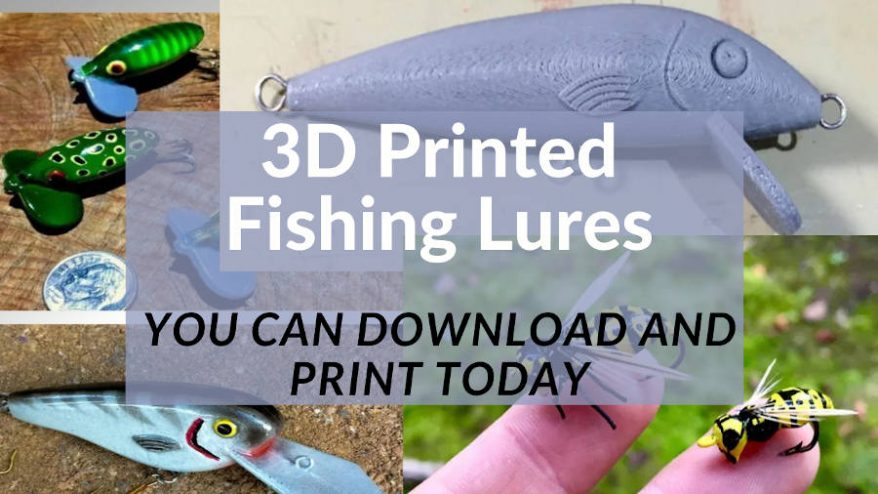
11 Great 3D Printed Fishing Lures You Can Print Today


At 3DSourced we’ve covered everything 3D printing and 3D since 2017. Our team has interviewed the most innovative 3D printing experts, tested and reviewed more than 20 of the most popular 3D printers and 3D scanners to give our honest recommendations, and written more than 500 3D printing guides over the last 5 years.
There’s a reason ‘Gone Fishin’ is the well-known sign that essentially means ‘no more work today.’ Fishing has long since been one of the most relaxing pastimes for centuries – whether you’re out catching your dinner or just want some good old-fashioned bonding time void of the screens and noise that everyday life comes with.
Growing up in a seaside town, I myself spent many a happy afternoon with my dad fishing in the river and sea I was lucky enough to have right on my doorstep, and my fishing bag and tackle box, still full of my old fishing lures, are now proudly displayed in my home as a reminder of those great times.
3D printed fishing lures are a great way to keep your tackle box full of interesting, personally made attachments made from fishing lure molds found all over the internet, many for free, and printed at home.
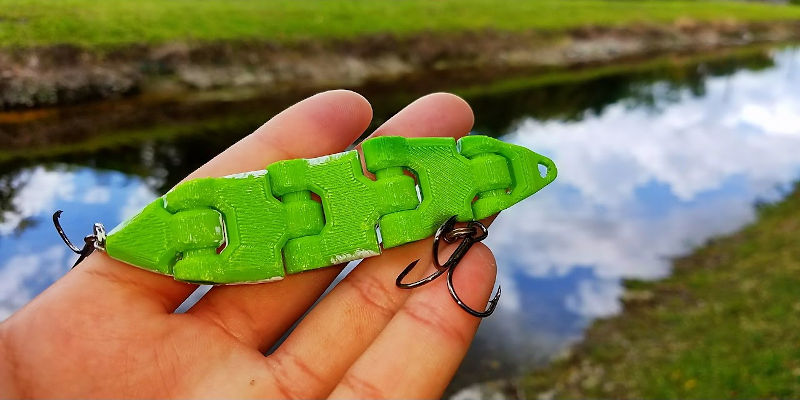
Not only that, but lure prints offer a far cheaper method of getting this equipment. Fishing lures are generally more expensive than live bait due to their materials, manufacturing, and reusability, and between loss and damage, their costs add up to a pretty penny if you’re a frequent fisher.
Fishing lure molds and models come in as many types as there are lures themselves, and each one is better suited to different environments and different fish. Here we’re going to look at not only the best and coolest looking 3D printed fishing lures, but also which ones are best depending on the kind of fishing you do.
Keep in mind, however, that 3D printed fishing lures aren’t as simple as print, paint, and go. Many need more than one piece, and there are often some extra steps, which change in complexity depending on the lure you choose to print. This includes feeding the lines, attaching the hooks, as well as assembling the various pieces for the more complicated lures.
3D Printed Jig Lures
- Best for catching: Almost any freshwater fish
Jigs are what come to mind when most people think about fishing, and they are fairly simple to make as 3D printed fishing lures for just about any freshwater catch, needing no supports and few extra additions. They’re also quite fast to print, so you won’t need to wait long to get going.
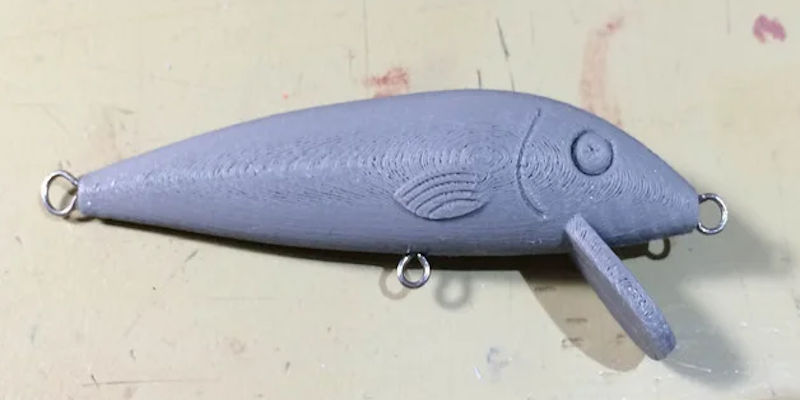
Because they’re weighted, jigs are good for catching bottom feeders like carp and bass, but you can also use them to catch anything from bream to salmon.
Fishing Jig
- Download: Thingiverse
- Designer: Mape
- Price: Free
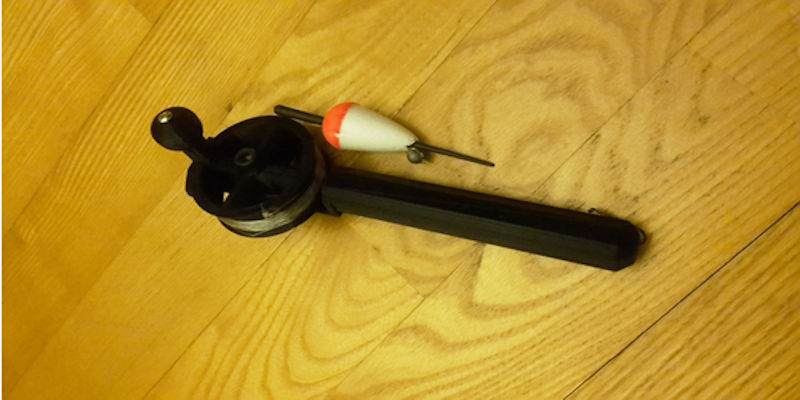
3D printed jig lures are fairly simple, and you can make them in a variety of styles and looks. This very simple lure only needs to be threaded onto your line and secured with a 3mm screw in before being cast.
If you want to get a little fancier, you can print out these lure molds to use with plastics or resin to create your own jig lure however you like in a variety of colors.
Fishing Lure V.1
- Download: Cults3D
- Designer: HONORIN
- Price: Free
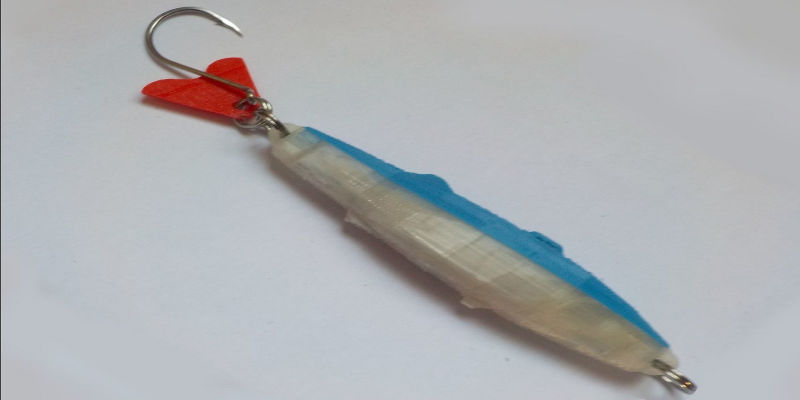
This lure was designed as separate parts so it can be printed in one to three colors even with resin printers. It includes enough hollow spacing for weighted pellets to be inserted, and is ideal for use with spinner blades or feathers to catch predatory and non-predatory fish respectively.
Ice Fishing Jig Lures
- Download: Thingiverse
- Designer: cvick
- Price: Free
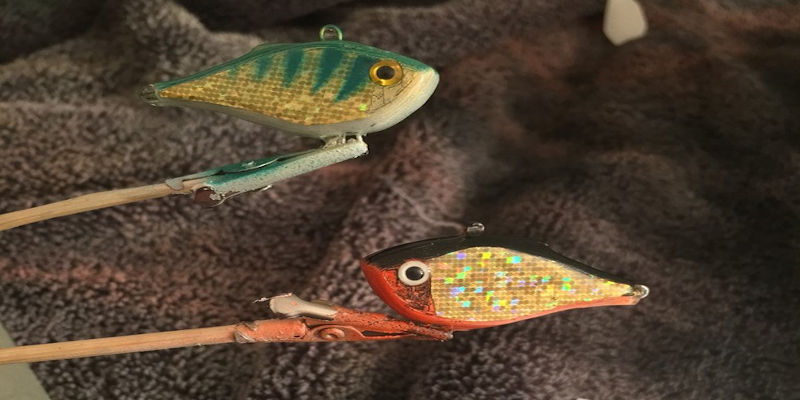
For those of you up north who like to go ice fishing, you can make these 3D printed jig lures specially designed for near-frozen waters to catch walleye, pike, and other fish who prefer icy temperatures.
3D Printed Spoon Lures
- Best for catching: Large Fish
Spoon lures are great for attracting larger fish with their concave shape that, if colored correctly, give off a sheen in water that larger fish like salmon, walleye, and largemouth bass.
Slide Spoon
- Download: Thingiverse
- Designer: kingscharter
- Price: Free
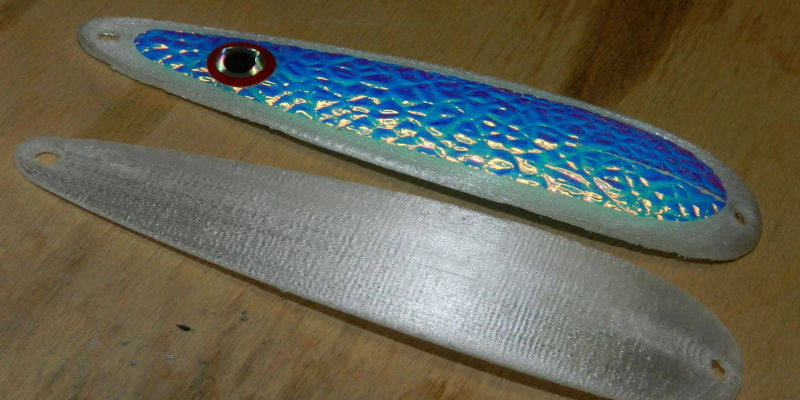
They’re pretty easy to make yourself, so long as you ensure it has only slight curve so it doesn’t move too fast in the water, and make it a light, reflective color so it attracts fish easier. Following the design found here is a good place to start.
If you don’t have any reflective colors available, glitters and sequence work just as well provided you use good quality, water durable glue. This not only lets your 3D printed fishing lures mimic a real fish, but the designer has made sure it also looks like an injured one due to the erratic movement of the reflective surface, making it seem like easy prey about to go belly up.
3D Printed Spinnerbait Lures
- Best for catching: Predatory Fish
Spinnerbait lures have small propellers attached to them that spin when the bait is moved in water, resembling a small, moving fish. This makes it ideal for catching predatory fish like bass and perch, which feed on other, smaller fish.
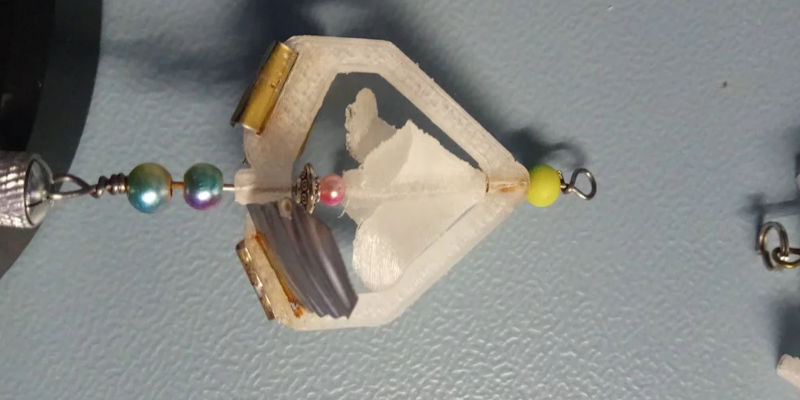
While slightly more awkward, spinner lure modules and additions are still fairly simple to print out and attach to your line.
Spinnertail
- Download: Thingiverse
- Designer: PaoloF
- Price: Free
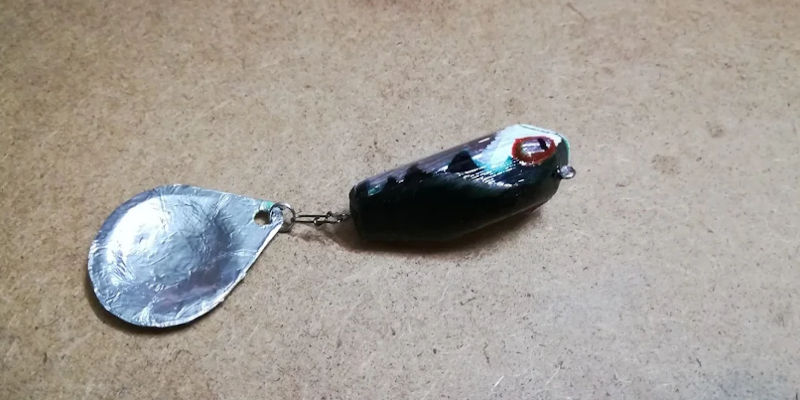
The important part of spinner lures is, as the name implies, the spinner itself. This makes the lure appear to be a moving, swimming creature so the other fish will be willing to gobble it up. Simple lures like this spinnertail come with the blade included in the design, so all you need to do is move it around slightly when in the water so it looks like it’s swimming.
If you’re already happy with the lures you have, but want to expand the kind of fish you can entice, you can print out these simple blades and decorate them as you like. Once attached, this will change any lure you have into a spinner lure for catching predatory fish.
3D Printed Crankbait Lures
- Best for catching: Predatory Fish
Like spinnerbait, crankbait lures are designed to mimic other fish to lure in predatory fish, with the main difference being the depth at which they can sink. Crankbait lures are smaller and fatter than other lures, and are normally made from wood or weighed down to sink to depths of around 4-6 meters.
Because they need to be weighed down, most 3D printed sinking lures need to be made in separate parts so ball bearings or similar objects can be put inside.
Panfish Lures
- Download: Thingiverse
- Designer: UPSCALE_LURES
- Price: Free
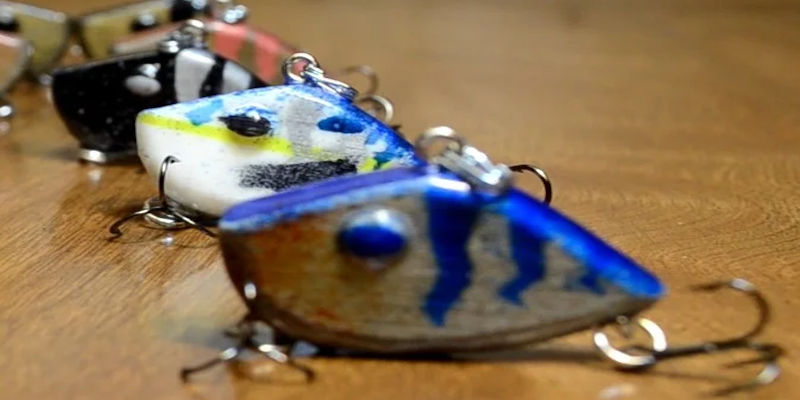
The designer of these small, lipless lures has ensured that they need only some super glue and hooks to be ready for use, and won’t loosen easily, they’re also easy to paint and customize as you like. You can even check out the attached videos in the link to see them in action.
Free Crankbait Lure
- Download: Cults3D
- Designer: STHONE
- Price: Free
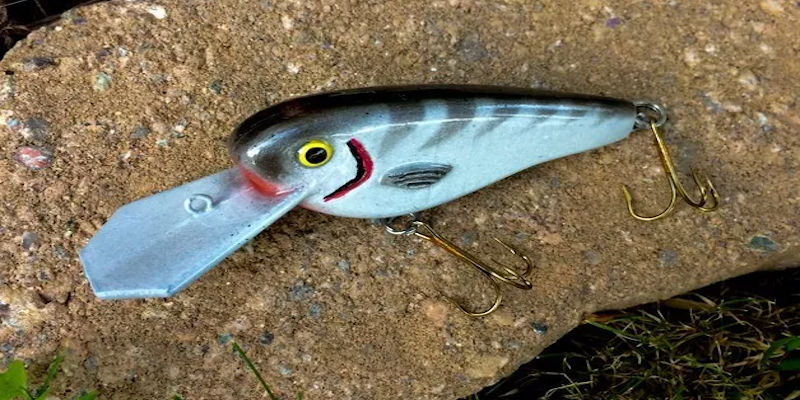
There’s also this clever little design re-imagined from a wood crankbait lure file made by the designer before, which proved to be useful enough to replicate as a 3D printed fishing lure. It also comes as two halves so you can fill it with weighted objects so it sinks.
Due to the simple shapes, you can also try your hand at designing your own. Just be sure to have each half printed separately so you can film them in and attach them later, including spaces for hooks and enough holes to thread your lines.
3D Printed Fly-Fishing Lures
- Best for catching: Salmon, Trout, and Grayling
Fly fishing is an art in itself. My grandmother would often tell me stories of her father fly fishing as though it were a performance, comparing it to ribbon dancing. With careful coordination and a skilled hand, fly fishing can be a rewarding, fun, and challenging way to get your catch of the day.
Jitterbug
- Download: Cults3D
- Designer: STHONE
- Price: $1.11
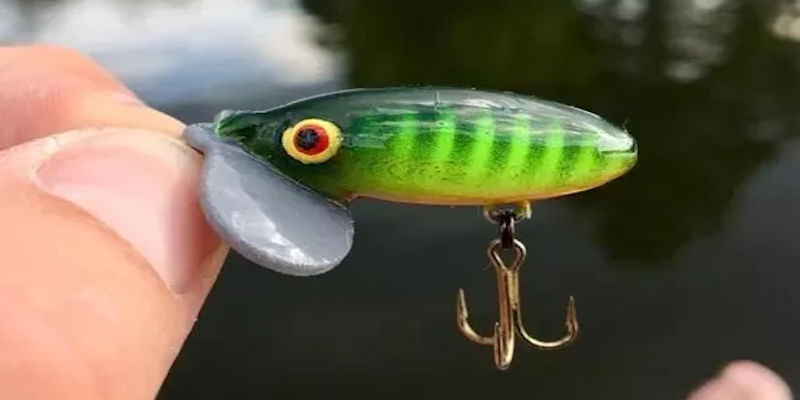
Fly fishing uses special, very lightweight lures known as artificial flies to skim along the water to mimic the titular insects to lure fish to the top of the water to catch them. The weight instead comes from the line itself, which is different from standard fishing lines in that they’re often coated in plastic to give them the weight needed for the various necessary casting techniques.
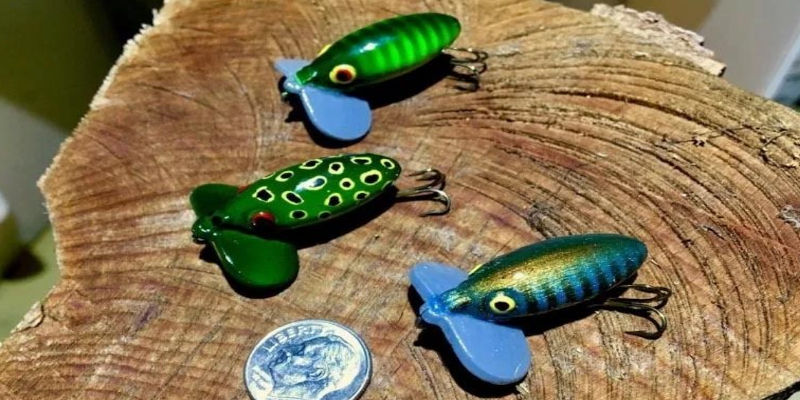
The main thing to consider when making your own 3D printed lures for fly fishing is that they need to be as light as possible. This is so they stay on the surface of the water and lure fish to the top.
The trick to this is making sure you 3D print these lures using something like polypropylene or other light materials or filaments, though most designs will incorporate a small metal attachment so they don’t break off the line when casting.
This design doesn’t include such a metal attachment, and so should be used with caution, especially if you’re a beginner.
Ultra Lightweight Wasp
- Download: Cults3D
- Designer: STHONE
- Price: Free
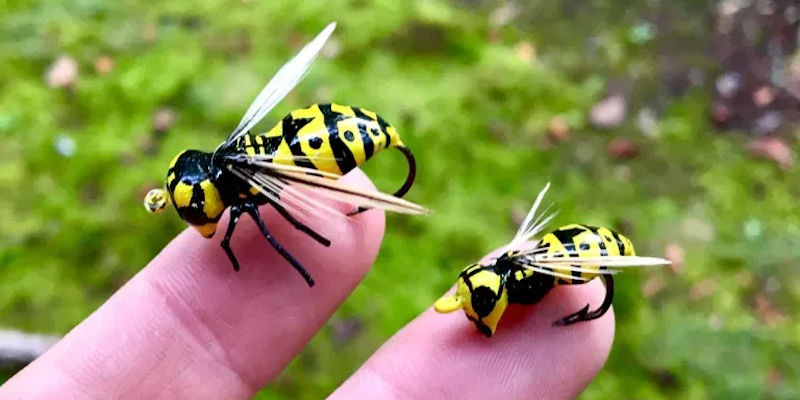
This ultra-lightweight wasp is by far one of the coolest 3D printed fishing lures we could find, and it’s usefulness is proven with example images of caught fish using it alongside the free files.
Extra Tips
3D printing your own fishing lures is a rewarding and money-saving endeavor. While most of them are fairly simple, there are a few things to keep in mind when making your own.
Whether you love the anticipation of the wait, or the excitement of the catch, 3D printing fishing lures to attach to your wire is a great way to enhance this age-old hobby.
Know What You Want to Catch
Different lures of different colors, sizes, and weights will be better at attracting different fish. As a pastime, many people are happy to simply enjoy the act of fishing rather than focusing on what’s being caught.
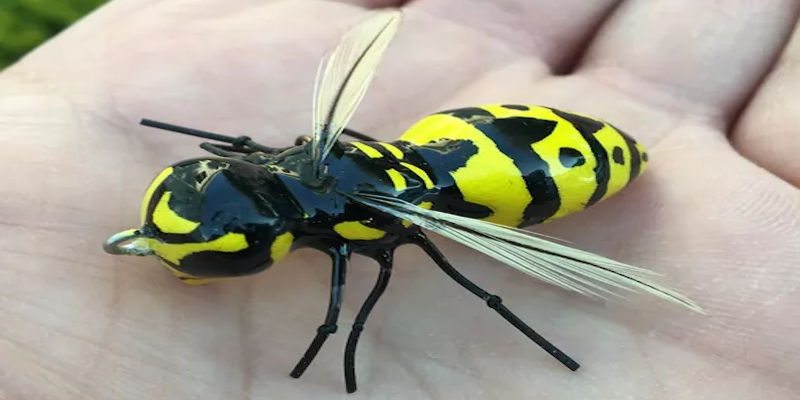
But if you’re fishing competitively or for food, you’ll want to be mindful of what lures work better. Crankbait lures aren’t great for catching catfish, while bottom feeders like carp and sardines aren’t going to be impressed with a fly fishing lure.
Topwater fishing will need a lure that floats, while deep fishing will need sinking lures. So keep in mind which kind you’ll need for the kind of fish you want to snag.
Match the Environment
Fish aren’t as dumb as many of us believe, and will recognize colors unfamiliar or dangerous to them. Making sure you select the right color to match where your fishing will make fish more likely to go for your bait.

Painting your lure with bright, reflective colors works better during the day, while darker colors in the evening or night will work better to blend in and appear more natural as prey to the fish.
You Can Combine Different Lures
Not all lures are standalone, and 3D printed fishing lures can be modified to work with others.
Spoon lures can be fitted with spinners, and sinking lures like crankbait can be added to any other 3D printed fishing lure to increase your chances of landing bottom feeders like catfish on your wire.
When you find a file you like, be sure to save it for future use too.
Can you 3D print a fishing lure?
3D printed fishing lures are easy to make and use, needing little by way of supports or complicated shapes. By finding the right files, making sure to assemble and decorate them for the desired effect to lure the fish, and keeping the files on hand to make more, you’ll find yourself using homemade lures in no time.
Can you 3D print a crankbait?
If you’re looking to catch predatory fish, then you’ll need a crankbait lure. These aren’t made in one piece, and you’ll need to assemble them carefully so they move like real prey. Despite this, they’re still simple prints that anyone can make with ease.
Other articles you may be interested in:




















